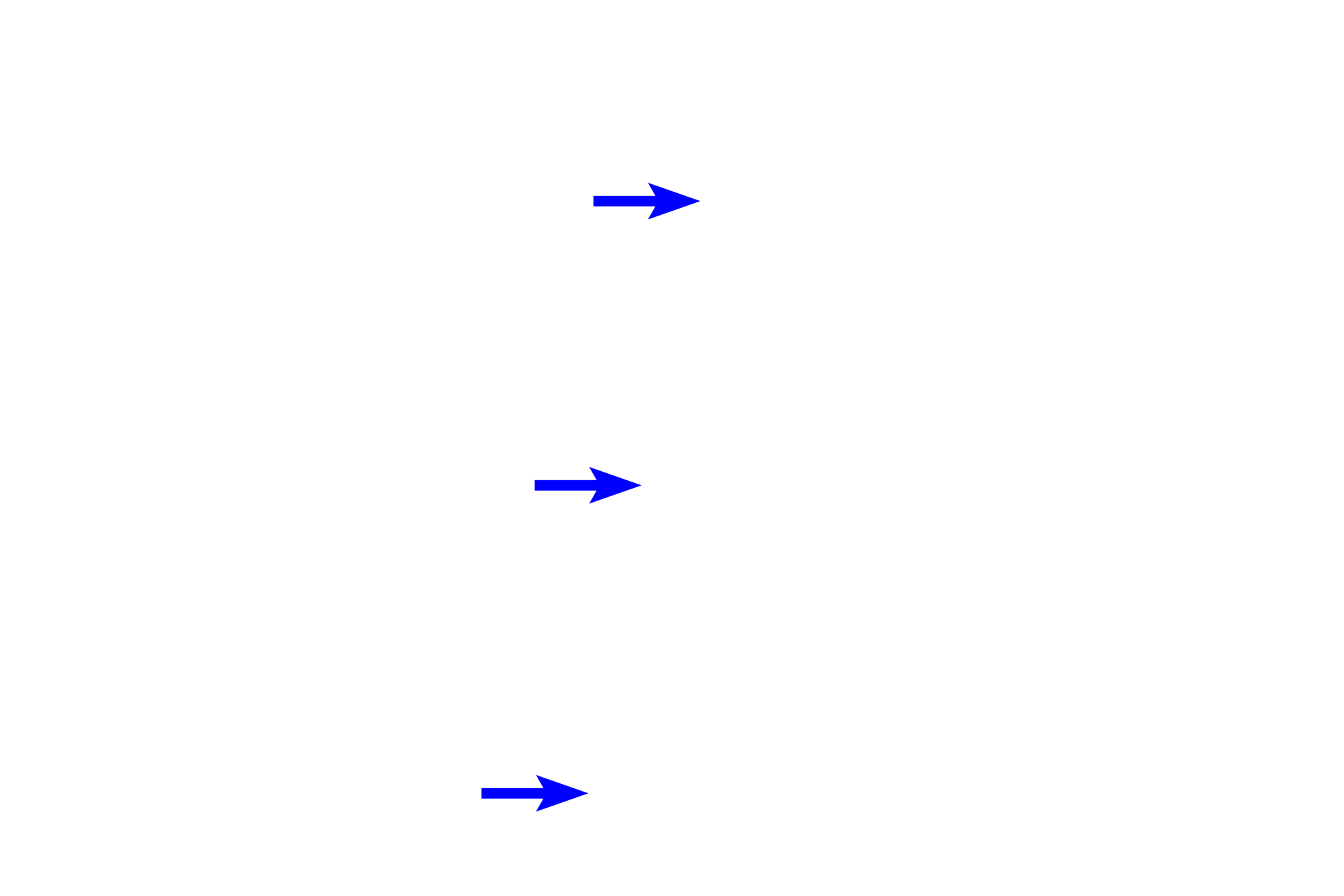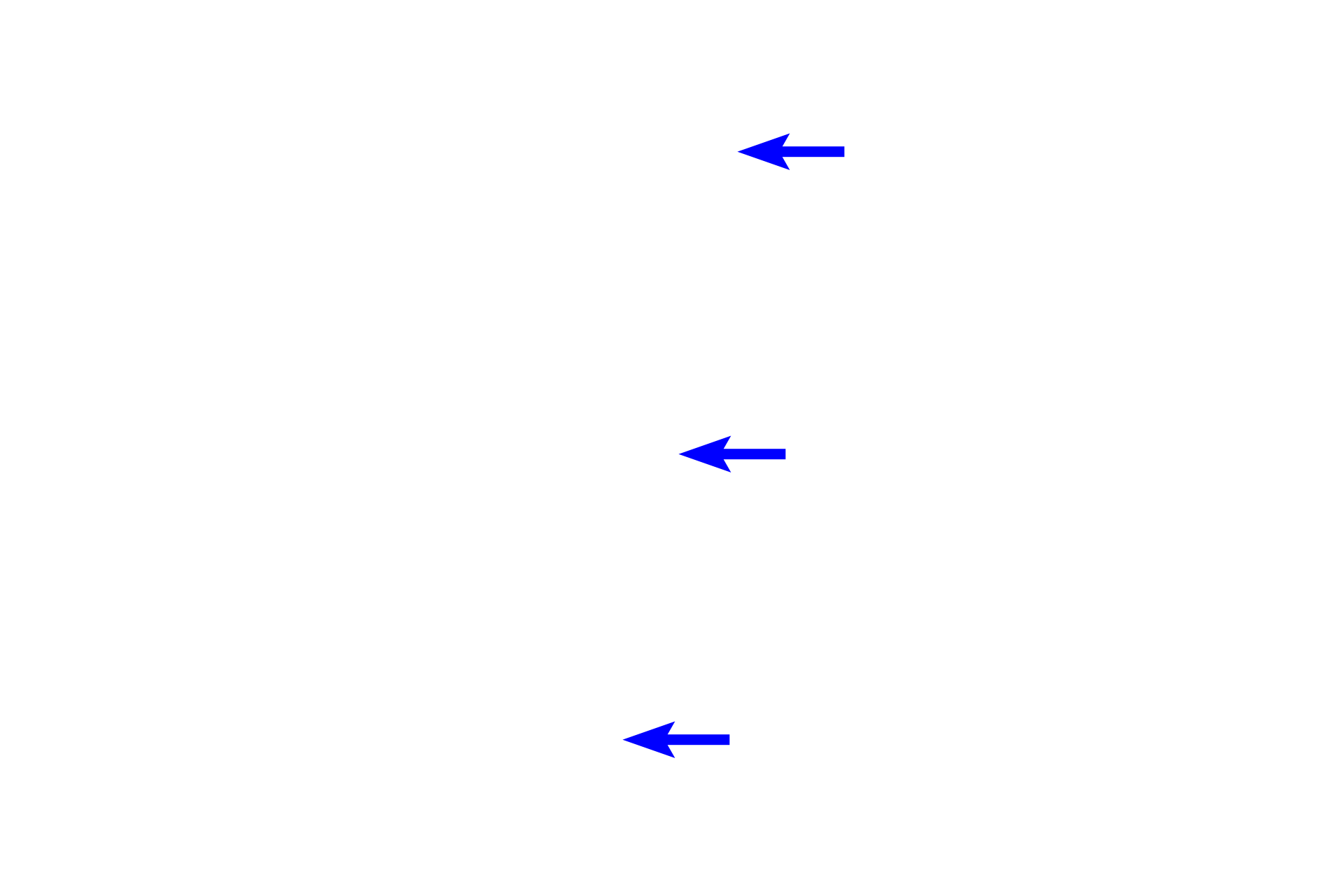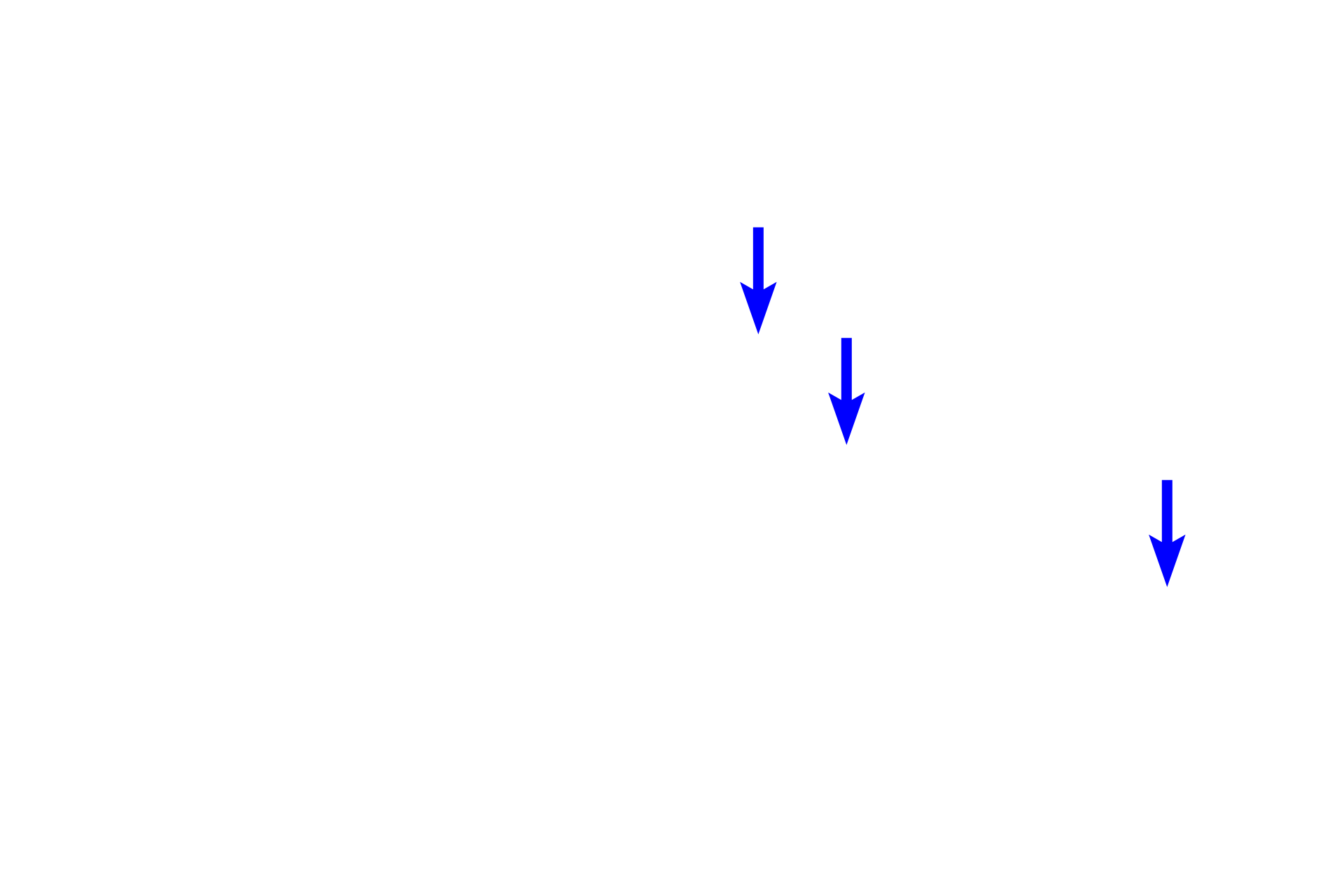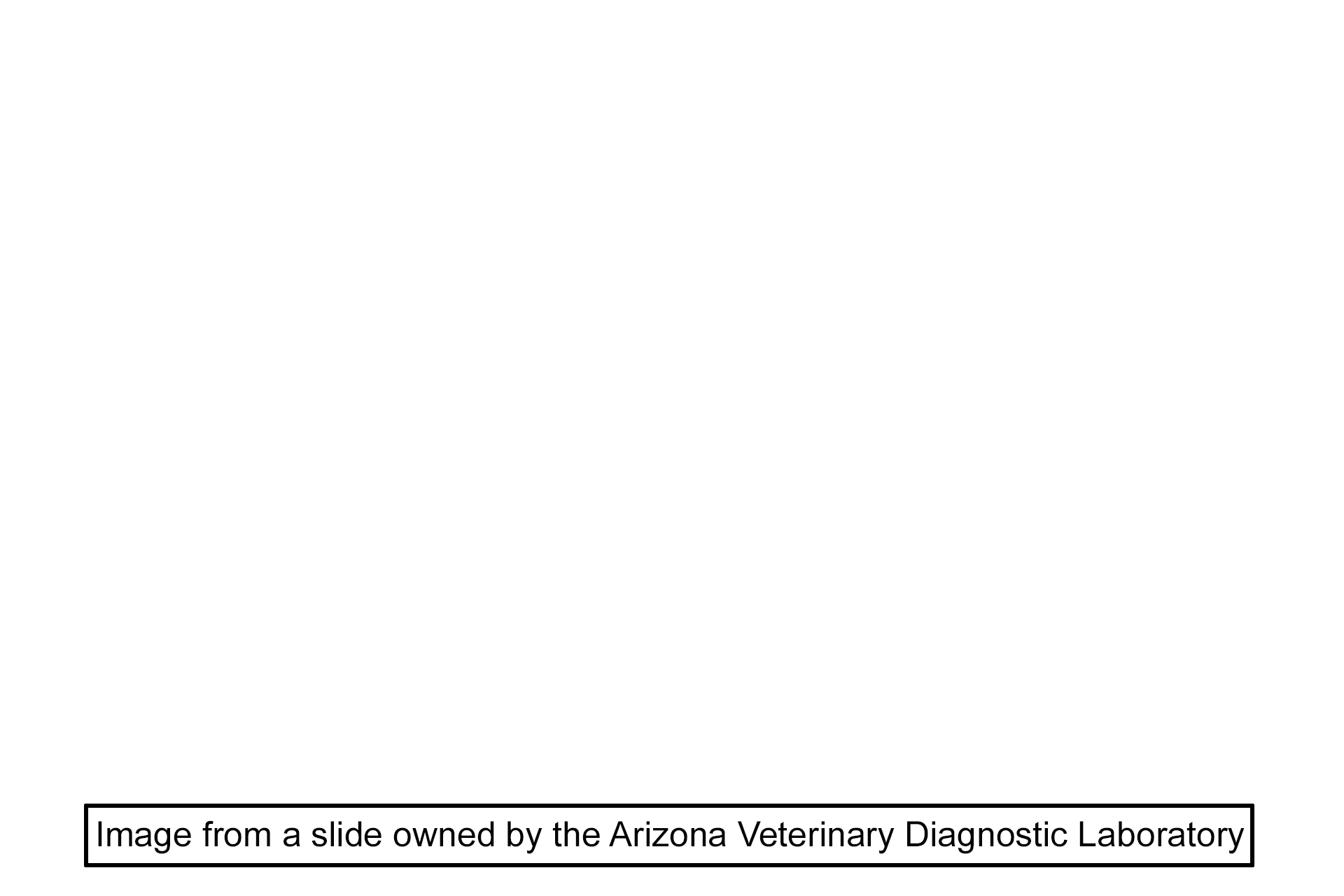
Globe: Lens
The anterior surface of the lens and portion of the iris are shown here. The outermost layer of the lens is a capsule, which represents the highly thickened basal lamina of the lens epithelium lying inside the capsule. This capsule consists primarily of proteoglycans and type IV collagen and except in the equatorial regions, is thicker on the anterior, than on the posterior, surface of the lens.

Lens
The anterior surface of the lens and portion of the iris are shown here. The outermost layer of the lens is a capsule, which represents the highly thickened basal lamina of the lens epithelium lying inside the capsule. This capsule consists primarily of proteoglycans and type IV collagen and except in the equatorial regions, is thicker on the anterior, than on the posterior, surface of the lens.

- Lens capsule
The anterior surface of the lens and portion of the iris are shown here. The outermost layer of the lens is a capsule, which represents the highly thickened basal lamina of the lens epithelium lying inside the capsule. This capsule consists primarily of proteoglycans and type IV collagen and except in the equatorial regions, is thicker on the anterior, than on the posterior, surface of the lens.

- Lens epithelium
The anterior surface of the lens and portion of the iris are shown here. The outermost layer of the lens is a capsule, which represents the highly thickened basal lamina of the lens epithelium lying inside the capsule. This capsule consists primarily of proteoglycans and type IV collagen and except in the equatorial regions, is thicker on the anterior, than on the posterior, surface of the lens.

- Lens fibers
The anterior surface of the lens and portion of the iris are shown here. The outermost layer of the lens is a capsule, which represents the highly thickened basal lamina of the lens epithelium lying inside the capsule. This capsule consists primarily of proteoglycans and type IV collagen and except in the equatorial regions, is thicker on the anterior, than on the posterior, surface of the lens.

Iris
The anterior surface of the lens and portion of the iris are shown here. The outermost layer of the lens is a capsule, which represents the highly thickened basal lamina of the lens epithelium lying inside the capsule. This capsule consists primarily of proteoglycans and type IV collagen and except in the equatorial regions, is thicker on the anterior, than on the posterior, surface of the lens.

Posterior chamber
The anterior surface of the lens and portion of the iris are shown here. The outermost layer of the lens is a capsule, which represents the highly thickened basal lamina of the lens epithelium lying inside the capsule. This capsule consists primarily of proteoglycans and type IV collagen and except in the equatorial regions, is thicker on the anterior, than on the posterior, surface of the lens.

Anterior chamber
The anterior surface of the lens and portion of the iris are shown here. The outermost layer of the lens is a capsule, which represents the highly thickened basal lamina of the lens epithelium lying inside the capsule. This capsule consists primarily of proteoglycans and type IV collagen and except in the equatorial regions, is thicker on the anterior, than on the posterior, surface of the lens.

Pupil
This image shows the anterior surface of the lens and portion of the iris. The outermost layer of the lens is a capsule, which represents the highly thickened basal lamina of the lens epithelium that lies inside the capsule. This capsule consists primarily of proteoglycans and type IV collagen and except in the equatorial regions, is thicker on the anterior, than on the posterior, surface of the lens.

Image source >
Image taken of a slide owned by the Arizona Veterinary Diagnostic Laboratory.